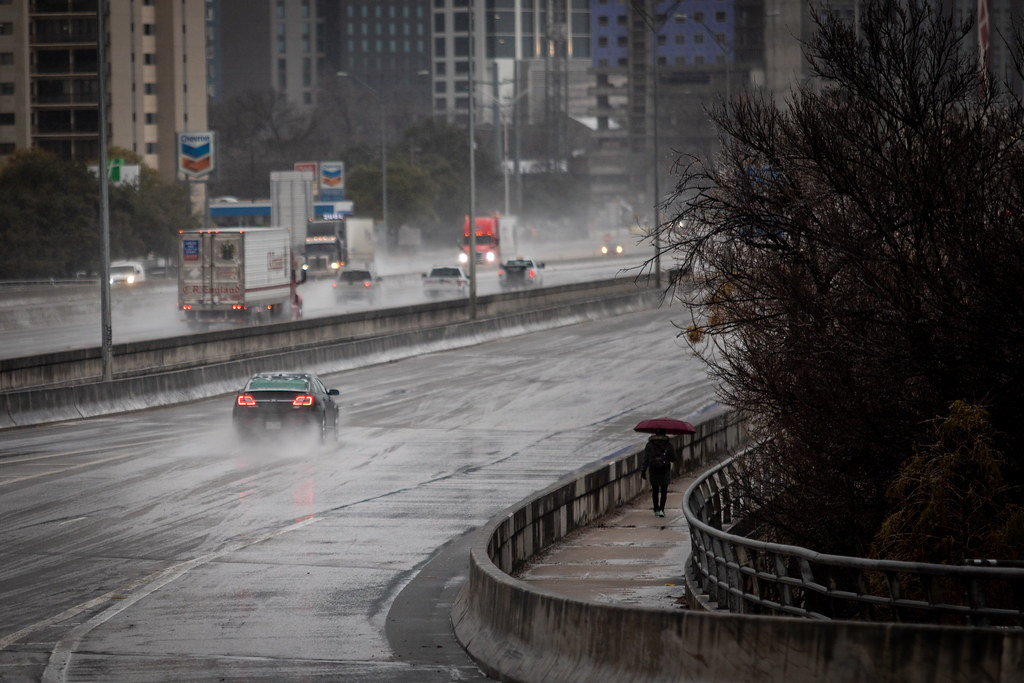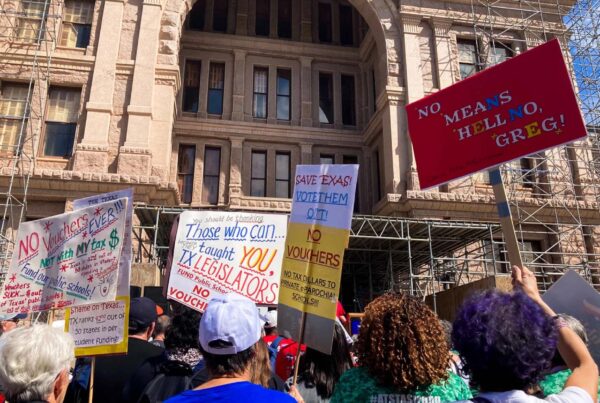For the first time in five years, we’re on the verge of an El Niño winter. And not just any El Niño, according to the latest report from the National Weather Service: This year’s system could be historically strong, with some forecasters using the term “Super El Niño.”
So what does this mean for Texas? Anthony Franze, newsroom meteorologist at the San Antonio Express-News,
This transcript has been edited lightly for clarity:
Texas Standard: Can you explain something just so that we’ve got some ground under our feet here? Folks have heard of El Niños. Folks have also heard of La Niñas. What’s the difference?
Anthony Franze: It all has to do with the water temperature, basically, in the eastern Pacific Ocean near the equator. It sounds pretty, like, “Why does that matter?” But when the water in the eastern equatorial Pacific is much warmer than average, it can really shift the global weather patterns. And when that happens, we get different jet stream positions in the U.S., and that can cause pretty big weather changes here in Texas.
Okay, so which one’s La Niña; which one’s El Niño?
For Texas in general, El Niño means that we’re going to get – or at least we tend to get – cooler weather during the winter and also wetter weather during the winter. So above-average rain and below average temps during El Niño in Texas.
So why have we had back-to-back La Niñas, but it’s been five years since the last El Niño?
You know, it’s really hard to pinpoint exactly why that happens. The La Niña, we just had really cool water in the Pacific Ocean there for several years in a row. And it is hard to tell what’s going to happen there years out in advance.
It all has to do with the trade winds, how strong they are. You have upwelling in the oceans. So it’s hard to tell exactly when we’re going to get El Niños and La Niñas. But they do have a good kind of trajectory on what the weather’s going to be here in the States during the winter.
» GET MORE NEWS FROM AROUND THE STATE: Sign up for Texas Standard’s weekly newsletters
So from what I can tell, El Niños are wetter, La Niñas are drier. Now we’re talking about a wet and cold winter – is that what is that what this is adding up to?
It is what’s adding up to. But there’s a caveat that it’s not a sure thing. We’ve had El Niño before that have been drier and warmer. However, majority of the time El Niño does does make it so we have a wet and cool winter.
A “Super El Niño,” though, is what a lot of forecasters are talking about. If you look back at history, what does that look like weather-wise for Texas?
Yeah, when people say “Super El Niño,” it’s not actually a real term that the National Weather Service uses. But it really means that the Pacific Ocean, those waters, are at least two full degrees Celsius – that’s over three degrees Fahrenheit – warmer than average.
It doesn’t happen that often. In fact, it’s only happened three times in the past, and this year could be the fourth time. And that just means that the likelihood of a cooler and wetter winter goes up. It doesn’t necessarily mean it’s going to be even colder and even wetter. It just means the likelihood goes up.
So when you talk to people about what to expect this winter, what do you tell them?
I tell them expect for a good amount of rain and expect for some chilly days. It doesn’t necessarily mean that we’re going to have the next snowpocalypse or icepocalypse, whatever you want to call it, that we had in 2021. That actually happened during a La Niña, which you wouldn’t really expect, because it can happen at any time. But the likelihood is it’s going to be a cool, pretty rainy winter.
Any other factors that Texans need to take into account as they prepare for winter?
Just that anything is possible. We all know; we’re from Texas. It’s 75 degrees one day and it’s 35 degrees the next. You just got to be ready for anything.
And these global weather patterns, it can show you a lot, but it doesn’t tell you where the next seven days is going to be. So just keep up with your forecast, and that’s going to be kind of the best preparedness you can have day-to-day.















